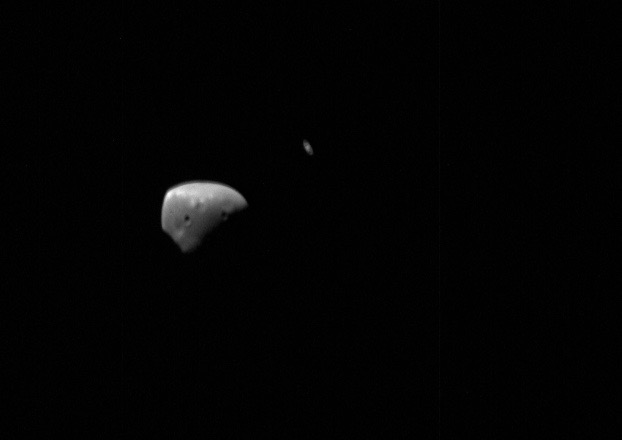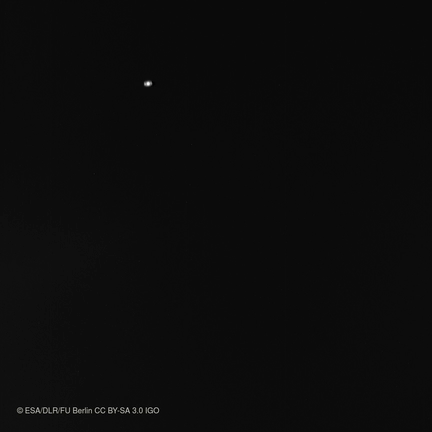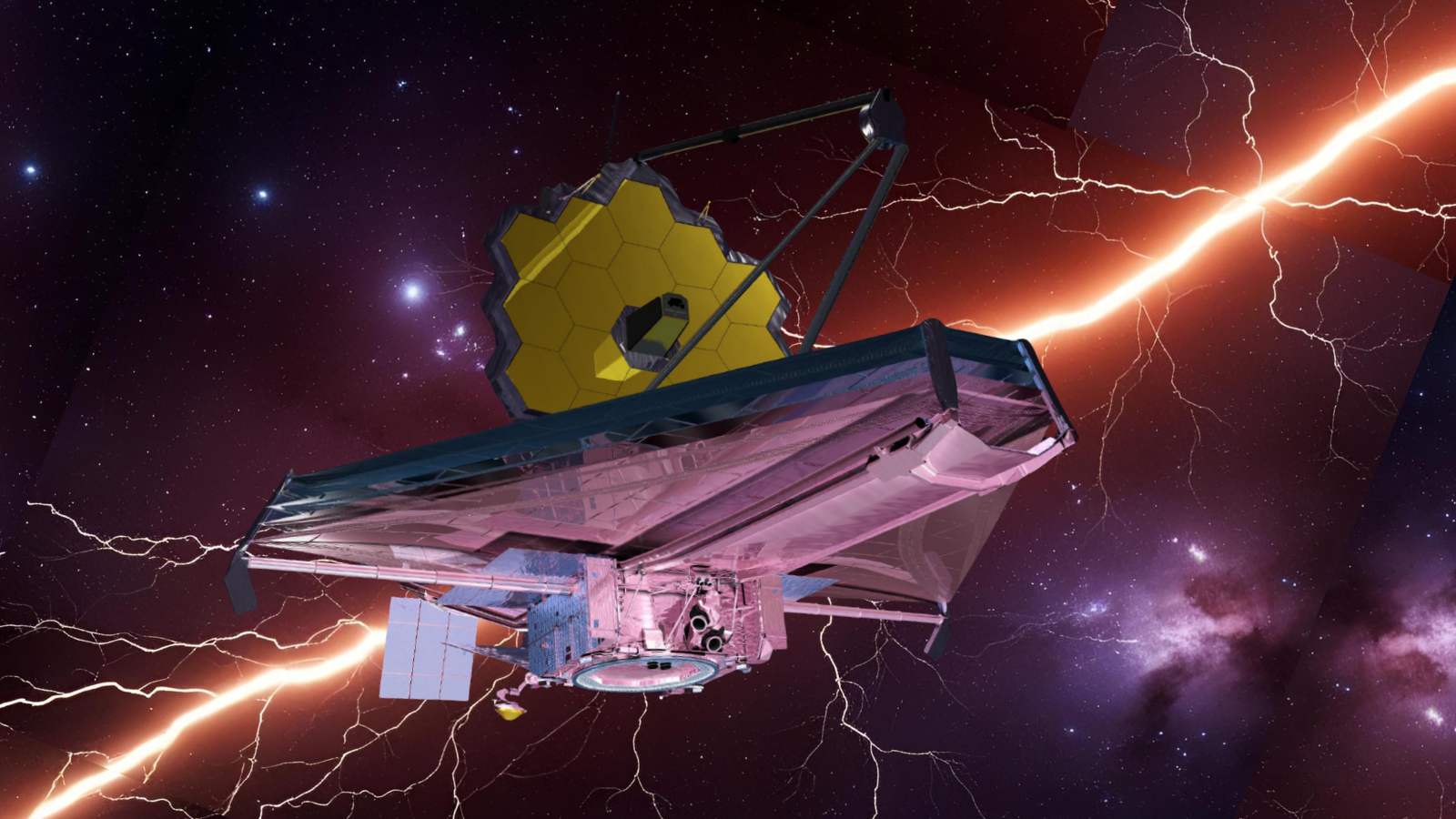European Spacecraft Catches Saturn Looming Behind Mars Moons (Photos, Video)
Saturn drifts behind Mars' tiny, battered moons Phobos and Deimos in spectacular imagery captured by the European Space Agency's (ESA) Mars Express orbiter.
Mars Express saw the 16-mile-wide (26 kilometers) Phobos zip in front of distant Saturn in November 2016. And I do mean distant: The ringed planet was about 620 million miles (1 billion km) from Mars at the time, ESA officials said.
Then, last month, the spacecraft snapped a shot of Saturn looming over the rocky shoulder of Deimos, which measures just 3.9 miles (6.2 km) across. ESA released all of this imagery Thursday (March 1), with the Phobos-Saturn photos integrated into a short video.
Mars Express also got shots of Phobos with a background star last month. There is a point to all of this photography beyond art and outreach.
"Scientists repeatedly refine our knowledge of the moons' positioning in the sky and ensure it is up to date by observing each moon against background reference stars and other solar system bodies," ESA officials wrote in a description of the newly released imagery. "These calculated positions are incredibly precise, and can be accurate to just a couple of kilometers."
Phobos orbits a mere 3,700 miles (6,000 km) from Mars, whereas Deimos circles the Red Planet at a distance of 14,600 miles (23,500 km). Both satellites have much tighter orbits than Earth's moon, which lies about 239,000 miles (384,600 km) from us on average.
Like Earth's moon, Phobos and Deimos may have formed from material ejected into space when a large object hit Mars long ago. But the origin of the two Red Planet satellites is still a topic of much debate and uncertainty; for example, some astronomers think Phobos and Deimos are former asteroids captured by Mars' gravity.
Breaking space news, the latest updates on rocket launches, skywatching events and more!
Like NASA's Opportunity rover, Mars Express is a long-lived Red Planet explorer. In fact, the two spacecraft reached Mars just weeks apart, with the ESA orbiter getting there in December 2003 and Opportunity following in January 2004. (Opportunity's twin, Spirit, also touched down on the Red Planet in January 2004. Spirit stopped communicating with Earth in 2010, but Opportunity is still going strong.)
Follow Mike Wall on Twitter @michaeldwall and Google+. Follow us @Spacedotcom, Facebook or Google+. Originally published on Space.com.

Michael Wall is a Senior Space Writer with Space.com and joined the team in 2010. He primarily covers exoplanets, spaceflight and military space, but has been known to dabble in the space art beat. His book about the search for alien life, "Out There," was published on Nov. 13, 2018. Before becoming a science writer, Michael worked as a herpetologist and wildlife biologist. He has a Ph.D. in evolutionary biology from the University of Sydney, Australia, a bachelor's degree from the University of Arizona, and a graduate certificate in science writing from the University of California, Santa Cruz. To find out what his latest project is, you can follow Michael on Twitter.



